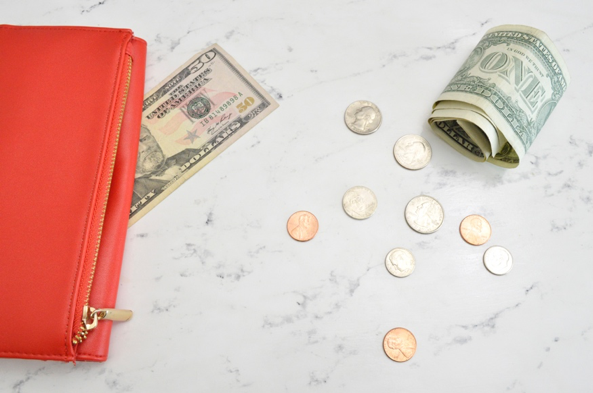
This fall, I returned to graduate school and to say that my life has changed would be an understatement. Aside from papers, projects, and exams, something else that has changed has been my grocery budget. I’m pursuing a degree in nutrition, so eating healthy, fresh food is not only a priority for me, it’s my passion. Sometimes I can get carried away with unnecessary food purchases (looking at you dark chocolate covered almonds) and spend well over my allotted grocery budget for the week. In order to stay on track, I try to follow these tips during my weekly grocery store run:
1. Shop your pantry first. This may sound like a redundant step, but this has been one of the greatest hacks for my budget. Not only will this save money by using items that you have on hand, but it also reduces food waste. Having a mental inventory of your pantry will make planning meals less overwhelming since this week’s meals are tailored to what you already have in the pantry.
2. Look for deals or coupons before making a grocery list. Are chicken thighs on sale this week? Then think about preparing a dish using chicken thighs instead of chicken breasts. When it comes to fresh produce, save more money by shopping for items that are in season.
3. Plan meals for the week. Write out a meal (or three!) for each day of the week. Try googling the ingredients that you have on hand for recipes if you need some inspiration. I like to find inspiration on The Kitchn for weekly meal plans or try a new Eat Smart, Move More, Weigh Less recipe like this Stuffed Sweet Potatoes recipe. Set realistic goals with how many new recipes you may want to try this week. Remember, not all of your meals need to be Instagram-worthy. It’s fine to plan simple meals if you know a particular day will be busier than the rest of the week. Once you have all of the ingredients for each recipe, compile a grocery list.
4. Skip brand names and shop generic. Once I realized that many of the brand name items I was buying had a generic counterpart that tasted very similar, I started shopping for only generic items. Now, there are very few items that I buy brand name. There are some grocery stores such as Aldi and Trader Joe’s that only sell their own brand and you may save even more by shopping there.
5. Stock up on a few convenient freezer items. There will be nights where it feels much easier to get take-out. This is where items such as a bag of frozen brown rice and vegetables makes for an easy meal after a long day without spending extra money on take-out. One of my go-to busy weeknight meals that I pull straight from the freezer is this Build Your Own Burrito Bowl recipe.
All in all, these have been some of the most helpful tips to keep my budget on track while still eating healthy. So far, I have not had to compromise my healthy eating goals because of my budget. While this method does take time and a little bit of creativity, it will be worth it to have a week’s worth of healthy meals AND have an answer to the question “What are we having for dinner?”.

Hi! I’d like to add one more: anything that is processed (think “anything you buy in a box or a package”) will cost you more both in terms of the ingredients themselves, which are cheaper if you buy them as whole foods and make the same dish, and/or in terms of the cost to your health because you are eating chemicals, bad fats, added salt, and HF corn syrup. Even if you are saving time by buying pre-chopped veg –a healthy option– you are spending a lot more than if you prepped it yourself. If you plan & prep several meals ahead of time, as suggested in the article, it’s a win-win in terms of $ and health.
Great point Susan, processed items are usually more expensive than buying the individual items themselves. Thank you for sharing!